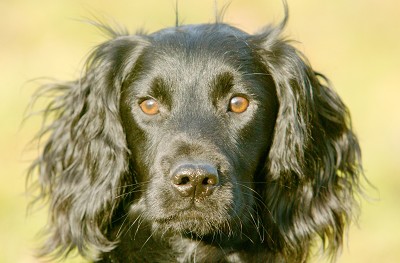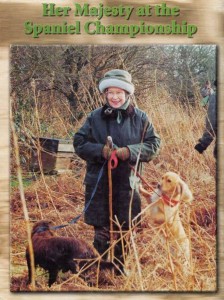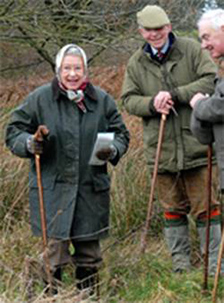Training By Chris

Put your ego aside. Not knowing how to make a dog behave is not a reflection on your intelligence. Dogs want what they want and they want it now! This is the only thing they are thinking about. All of their thought and energy goes into getting what they want without concern for what anyone else thinks about them. Because of their dedicated focus on right now, they are better at training us then we are at training them. Every second you are with your dog, one of you is training the other. If you do not consciously act like the leader, then by default your dog is in charge. It is bad enough that most dog trainers think they know everything. Combining a trainer and an owner that take things too personally can end in disaster!
Not being able to train your dog yourself has nothing to do with how educated you are, what kind of car you drive or where you live; nor does being a good dog trainer. You can excel at everything in the human world and still know nothing about being a good dog leader. Most pet dogs are ill-mannered and in need of training, so you are in good company. I have dealt with thousands of dog owners from all walks of life and the only thing they all had in common was they each had a dog. Dog people understand how embarrassing it is to have to run down the middle of the street at 6:00 a.m., waking up the whole neighborhood trying to catch your dog that ran out the front door while you were getting the paper. We have all been there; dog people understand. And it doesn’t do any good to worry about what non-dog people think. They don’t even understand why anyone would let a dog in the house.
Remember, dogs can hear. You cannot get them to behave by shouting louder and louder or just repeating the same command over and over again. Shouting and arguing are not good leadership skills in the dog world. Dogs do give signals of increasing frustration, but not in the same way we do. By the time you find yourself in an argument with your dog, you have lost the argument. You can be sure that if you are angry or frustrated, so is your dog.
Dealing with your dog in this manner is more than just counter-productive to training; it can be downright dangerous. Your dog can misinterpret your emotions as aggression and become fearful or aggressive himself. If you find yourself out of control, then put your dog away! If you cannot control yourself, how can you control your dog? Try again later when you and your dog have both calmed down.
Whatever you do with your dog is also an example for your dog. Dogs, more than other pets, copy people actions and emotions. They not only want to be with us, but they want to act like us as well. And yes, when your dog stands his ground and barks at you, he is yelling back. More accurately, he thinks your yelling is barking. So why shouldn’t he bark back?
Learn the rules. These are the rules that your dog knows, but has never shared with you. They are the rules that he lives by:
Everything is a resource. This rule is simple. All you have to do in order to understand it is to step out of your human multi-dimensional world and believe that only one thing exists: resources. Again, everything is a resource and this means everything — the couch, the bed, the kitchen, the back yard, the dog’s bed, the front door, space, time, activities, people, water, food, affection…everything. And, if your dog wants one of these resources, then he goes into problem-solving mode and thinks of nothing else but how to get what he wants.
Every resource has a value. The reason your dog might be good about not chewing your shoes, but doesn’t miss a chance to dart out the front door, is because being outside has a higher value than shoe-chewing. One toy might be more valuable than another, which is why your dog always seeks it out. It could be that the reason you have to step over your dog to get down the hallway is because the hallway space is a valuable resource and it belongs to the dog. If your dog growls or nips, it could be because he is guarding something of great value. Do not try to second-guess the value of something to your dog. It is unlikely that you share the same values. Remember, some dogs highly value eating bugs and cat poop.
Now here is where it starts to make human sense: all the resources belong to the pack leader. This means that if your dog really believed that you were the pack leader, you would never have to worry about him chewing your socks, running out the front door or trying to bite your significant other when they tried to get into bed. If everything is a resource and all the resources belong to the pack leader, then the dog would not guard them unless they belong to him. And, if they belong to him, then he must be the pack leader because the pack leader owns all the resources. Are you starting to get the picture?
The leader of the pack always enforces the rules. Now why does your dog think he is the leader? Exactly — you don’t always enforce the rules and the leader always enforces the rules. If you are not the leader, then by default the dog is. See how easy it is?
There are a thousand ways you could show your dog that you are the leader, but the best way to start is to think about these rules when you interact with him. If the furniture is yours, then don’t let him jump on the couch unless you invite him to. If it is your house, then don’t let him go in or out the doors without permission. If you own playtime, then ignore your dog when he drops the ball at your feet, no matter how cute it is. Wait until he goes away then call him back and ask him to play. Make it your idea. If he is lying on the kitchen or hall floor, don’t step over him; use your foot to gently nudge him out of the way. After all, isn’t it your floor? In short, your dog is not allowed to own anything or make any decisions.
Of course, some dogs will not respond to these obvious leadership signals. If you have unusual problems dealing with your dog, or his behavior is endangering himself or others, then you need to invest in private lessons or a more comprehensive training program. But if you are just looking for more respect and a relatively well-behaved dog, then give it some thought. A slight change in your behavior can amount to a significant change in his. Dogs love their owners, but they respect their leaders. You need both to have a well-balanced relationship with your dog; you need a well-balanced relationship with your dog in order to train him.
Now that you understand a bit more about pack leadership, stop copying the TV dog trainers who pin the dogs to the ground with an alpha roll. This is great entertainment but does not automatically earn you your dog’s respect. There is a good reason that the television shows flash disclaimers across the screen — someone can get hurt. And remember, you do not have to be a tyrant to be in charge; you can be a benevolent leader.
With all training programs, you should closely supervise your dog for an initial period of time (longer for puppies). But after you have shown your dog what you expect from him, in most situations you should be able to let your guard down if you have established yourself as the pack leader. If you have not, then to your dog you are just a big hairless monkey who yells at him every time he decides to have some fun with your stuff. You will know when you are the pack leader because your dog will start looking to you for permission to act, instead of you constantly looking at him in order to keep him out of trouble. In short, leadership means you are in charge.
Number 1
Before proceeding with any formal retrieving make sure the dog returns eagerly and straight back to you. If he goes around you on a straightforward return call he wont come back straight in with a retrieve.
Number 2
Ensure before you go out on a shooting day…whatever discipline that your dog is comfortable just sitting still for up to 30 mins. On a shoot day you will want him to sit and wait…for the drive to begin, whilst pigeon shooting or the beaters etc and if he is not happy being still normally imagine how much more exciting the shoot day will be. There is nothing more annoying than a fidgety dog.
Number 3
Try to avoid eye contact with your dog when they are returning to you…..in the dog world eye contact is a form of aggression and can intimidate a youngster so they are reluctant to come right in to you.
Number 4
As a pup let your dog jump up at you, it will promote more confident retrieving later and his delivery will be much better. He will be less likely to circle around you.
Number 5
If a youngster circles around you with a retrieve either;
a) stand with your back to a wall or fence
b) do your early retrieving in a ‘lane’ or restricted corridor so he cant pass you.
After a while you can move back into the open once he has got the ‘picture’ of always coming straight into you.
Number 6
Either call or whistle your dog as soon as it is picking the retrieve up, this promotes a quick return.
Number 7
Keep your dog retrieving as far as practical in straight lines. To aid this use fence lines, tracks and hedges.
Number 8
When giving your free running dog a stop whistle start by ensuring he is facing and coming either toward or across you. You will be able to reinforce the signal with body language and movement.
Number 9
When starting all whistle hand control signals keep the dog on the lead so it can be corrected with the minimum of fuss. He is also more likely to behave close in and we need to build on success.
Number 10
The stop whistle is very negative command so to help us turn it into a positive one always use plenty of praise or throw a dummy up in the air…you will get a smarter reaction if the dog thinks it will get a reward.
Number 11
Never use tit bits, it teaches a dog to spit out things in anticipation of eating a reward. Verbal reward is all thats necessary.
Number 12
Praise your dog as much as possible it aids a dogs confidence, we all tend to be far to negative and strict on the dog….result neither of you enjoys the training. When he is doing as you want and especially when he is near you then keep repeating good boy good lad, you will find he is far more respsonsive to the commands.
Number 13
Body posture,position your body the way you want the dog to go, but keep an eye on him by turning your head and looking over your shoulder.
Number 14
Give your dog something to do, dont let him decide where and what to do….TELL HIM….give him an area to hunt or call him back,make him walk to heel.



